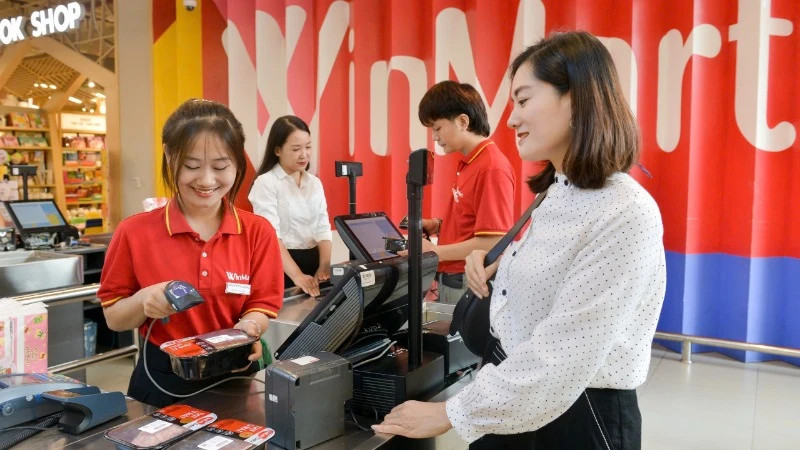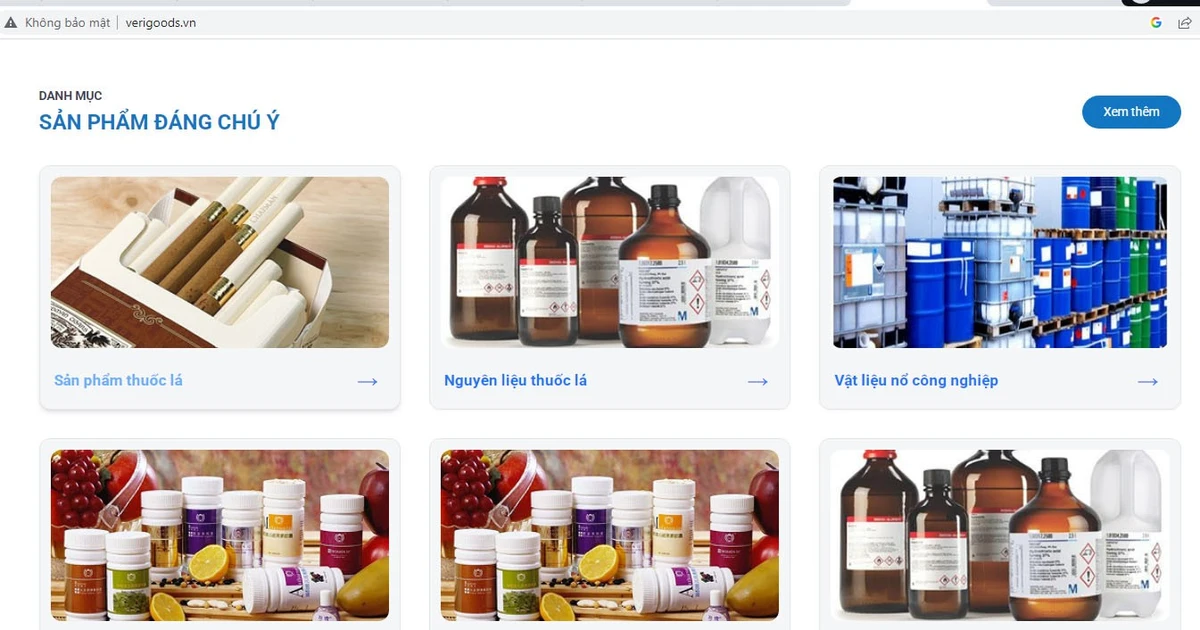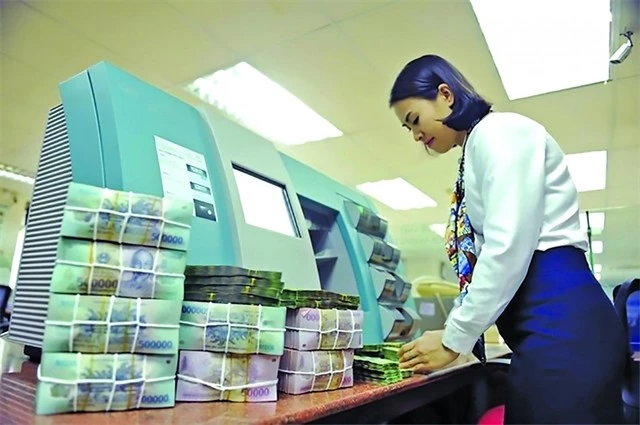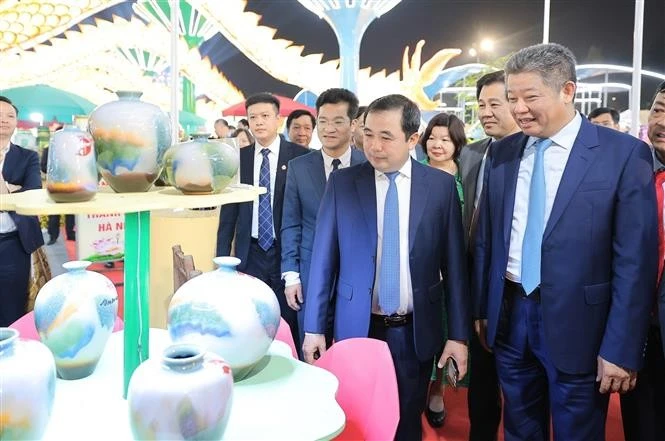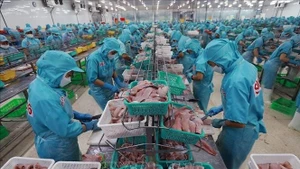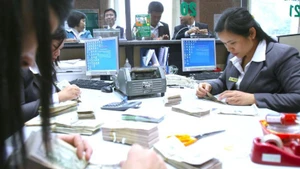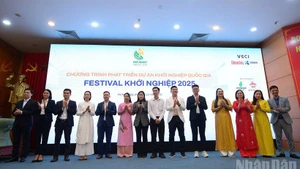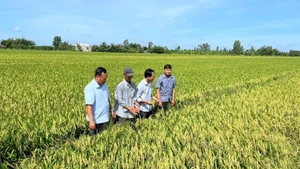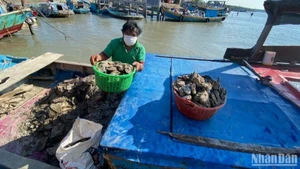From this reality, it is time for businesses and management agencies to proactively implement digital transformation strategies to build a more transparent and efficient system for supply chain management and anti-counterfeit efforts. This also implements Decision No. 100/QD-TTg of the Prime Minister on approving the project to deploy, apply and manage the traceability system.
Lack of traceability, consumers are disadvantaged
When ministries, sectors and enterprises adopt traceability systems in line with national standards, it helps reduce fraudulent practices in commerce. However, a worrying trend is the improper use of QR codes for traceability purposes, which is becoming increasingly common.
Free tools, but businesses are uninterested
Recently, public opinion has been shocked by a series of incidents related to consumer health, including large-scale production and distribution of counterfeit pharmaceuticals; a sophisticated fake milk production and consumption ring operated by Rance Pharma International Pharmaceutical Joint Stock Company and Hacofood Group Nutrition Pharmaceutical Joint Stock Company and Kera vegetable candy products, which are advertised misleading customers.
While the origin of these fake products has been traced, identifying specific responsibilities of authorities remains inconsistent, highlighting the need for more effective coordination in controlling and handling violations.
A critical issue raised by these serious incidents is that while tools to control and prevent violations already exist, they are underutilised, namely, transparency of information and traceability of goods from businesses and management of traceability systems from authorities.
Analysing the Kera vegetable candy case, a representative from a traceability solution provider noted that the perpetrators falsely claimed to have sourced vegetable powder from farms meeting VietGAP standards. If businesses had properly declared their supply chains according to national traceability standards and the guidelines of relevant ministries, sectors, and local authorities, and if the information had been synchronised with the National Product and Goods Traceability Portal, consumers would have had access to and been able to verify the information. In such cases, fraudulent activities could be detected and addressed promptly.
According to Pham Thi Ly, Director of the Centre for Business Integration and Development, if companies such as Rance Pharma International Pharmaceutical Joint Stock Company and Hacofood Group Nutrition Pharmaceutical Joint Stock Company had participated in the traceability system for agricultural, forestry, and fishery products of Ha Noi (check.hanoi.gov.vn) or the National Product and Goods Traceability Portal (truyxuatnguongoc.gov.vn), they would not only have been trained and guided data entry following national traceability standards, but also been subject to regular supervision by food safety authorities.
As a result, consumers, especially vulnerable groups such as children, the elderly, and the sick, could have avoided the use of substandard products like counterfeit milk and fake pharmaceuticals, which have caused public concern in recent times.
Ha Noi’s traceability system is a public platform invested in and operated by the Ha Noi Municipal People's Committee since 2018. It is provided free of charge to businesses and is built on the CheckVN technology platform to ensure traceability, product authentication, and food safety management.
Businesses are encouraged to participate in the system and are granted accounts to declare product information. The system automatically generates QR codes for each product batch for businesses to use. Required information, including batch number, production date, ingredients, raw materials, growing area, and manufacturing facility, is all key information necessary to ensure product transparency.
This information is made public and subject to supervision by authorities during its distribution, as well as by consumers. With the openness and supervision mechanism, businesses find it difficult to act contrary to the declared information. Each year, the Ha Noi Department of Agriculture and Environment organises training sessions and communication activities on food safety and traceability system management for businesses and production facilities.
Currently, 11 provinces and cities across the country have applied this technological solution to manage the origin of products in their localities. However, the current problem is that businesses don't need to implement their product and goods traceability, thus they are still uninterested in using the system, and specialised management agencies have not fully participated in the system to operate and control the product and goods traceability in their management fields.
QR Codes only used for display
A particularly noteworthy point in the aforementioned counterfeit milk case is that the product featured a QR code, yet the information contained within did not meet traceability standards. According to the national standard issued by the Ministry of Science and Technology, TCVN12850:2019, and the Circular No. 02/2024/TT-BKHCN on the products and goods traceability management, traceability is the activity of monitoring and identifying a product or service throughout each stage by time and location, covering production, processing, storage, preservation, transportation, distribution, and sale.
The traceability data for each product or goods in the traceability system must include at least the following information: name and image of the product; name and address of the producer or distributor; production and business stages, and the time of production and sale. However, the alarming reality is that QR codes are failing to meet these traceability criteria as prescribed, and this situation is widespread in supermarkets.
A brief survey at large retail chains such as GO Mart, Win Mart, Lotte Mart, AEON Mall, BRG Mart, Haprofood, and Co.op Mart revealed that most food and vegetable products are affixed with QR codes. However, scanning them using smartphone apps yields highly inconsistent results. Most commonly, the QR code links to information pages introducing the business, manufacturer, the business's products, or even showing the message of a connection error.
The majority of products or QR codes fail to provide traceability information as stipulated. Some businesses circumvent the regulations by displaying generic content labelled “trace information” rather than proper traceability details, offering only common information about the business and product.
This situation shows a concerning reality that QR codes are being misused as technological ornamentation, misleading consumers into believing that the product has undergone proper origin verification. Experts warn that this loophole enables counterfeit and substandard goods to infiltrate distribution networks. Therefore, to effectively prevent fraud and protect consumers’ rights, the application of traceability technologies must be implemented more comprehensively, not only encouraged but also made mandatory.
QR codes only deliver their value when being integrated into a transparent traceability system with stringent supervision from competent authorities and serious engagement from businesses. To tackle the root of counterfeiting and imitation goods, there is a need to develop a clear legal framework and mandatory traceability mechanisms for high-risk product categories, laying the foundation for a transparent and safe market.
